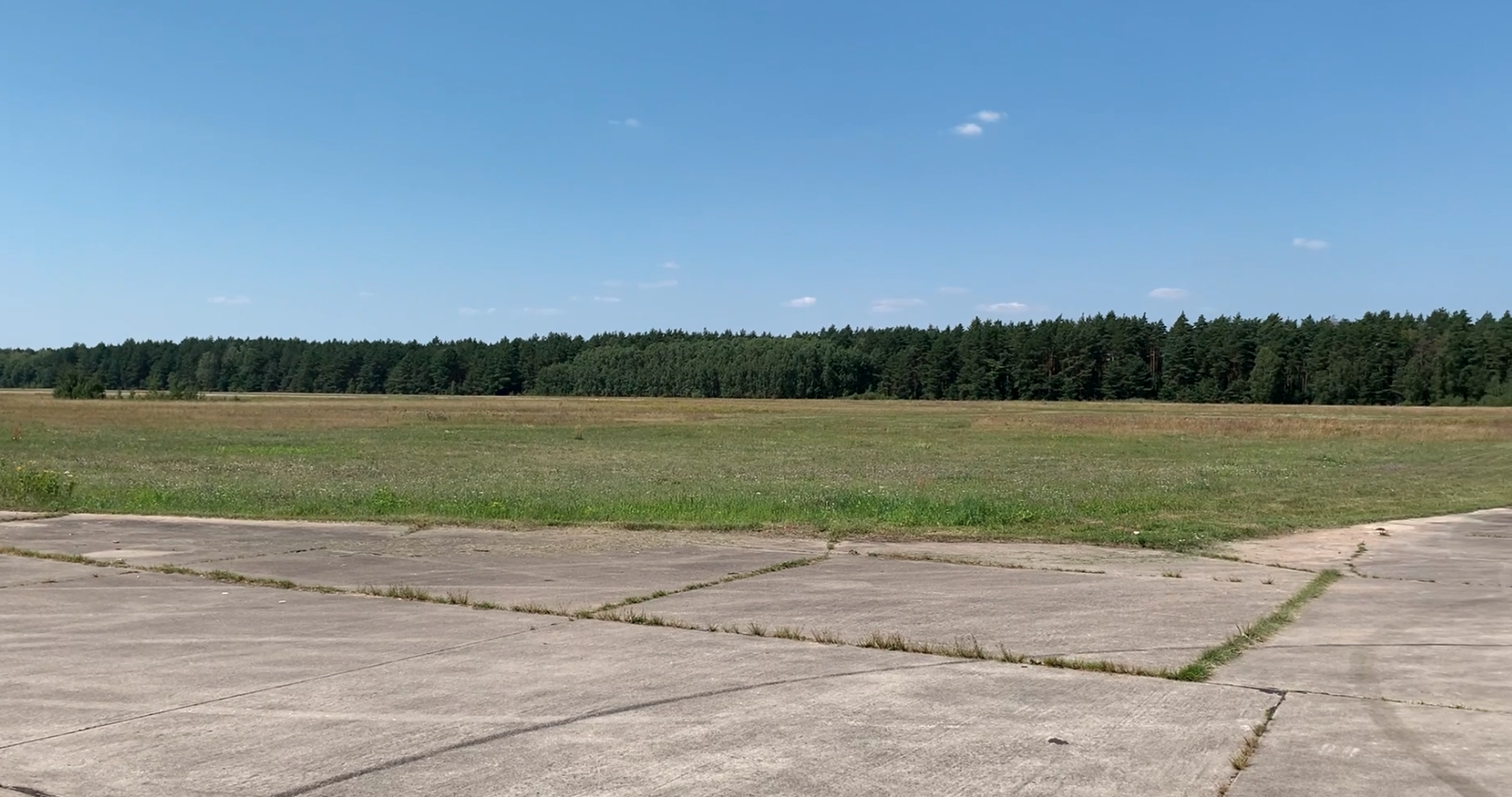Piła 2011-05-28
Geographical coordinates: 53.169N 16.710E. Elevation 80.00 m (262 ft).
History of Pila Airport.
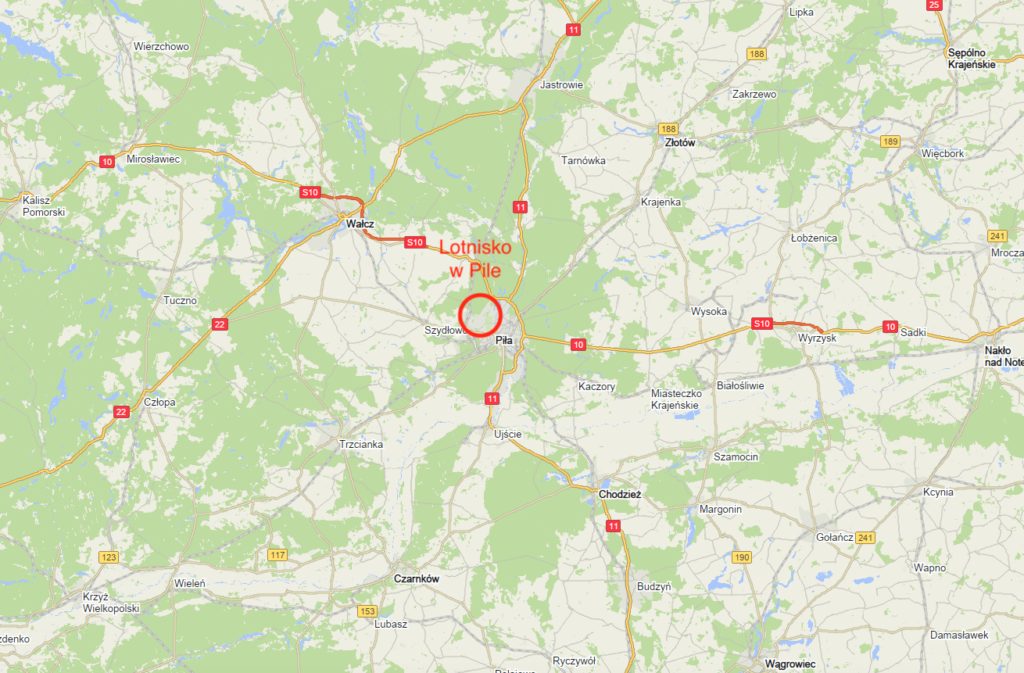
City of Piła.
The city of Piła is located in the Greater Poland Voivodeship and is the seat of the County. In the period 1975-1998, it was the capital of Piła Province. The city is situated on the river Gwda, which is the right tributary of the Noteć. It is only 10 km from the centre of Piła to the Noteć River. The main driver of the city’s development is its location between Bydgoszcz, Poznan and Gorzow Wielkopolski. The city is also an important regional academic centre with branches and offshoots of state and private universities from Poznan, Bydgoszcz and Szczecin.
Piła is an important city in Poland. It ranks 51st in terms of population and 27th in terms of area. According to data from 30 June 2010, the city had 74,557 inhabitants. The area is 102.68 square kilometres. The population density is 726 persons per square km. The altitude in relation to the sea is 50-134 m above sea level. PP vehicle registration plates.
The town historically and geographically belongs to Wielkopolska. The name is derived from the sawmill, which was the primary establishment of the settlement. The settlement was founded in the 14th century, next to a sawmill harvesting wood from the forest. The village was owned by the Pomeranian Dukes. Then it was seized by the Teutonic Knights. In 1368, King Casimir the Great of Poland reincorporated it into the Crown. Piła was granted city rights, based on western law, between 1437 and 1449. On 4 March 1513, King Sigismund the Old of Poland confirmed the city rights under Magdeburg Law. The city was destroyed by fires several times. These disasters were joined by the Swedish Deluge. The Swedes destroyed the town by razing it to the ground. In addition, they destroyed the system of dikes and drainage ditches, causing flooding. The town was rebuilt. It became an important centre (in addition to the timber industry), the cloth and silk industries. The First Partition of the Republic of Poland brought Piła under Prussian guardianship. This halted the city’s development and further resulted in the Germanisation of the Polish population. A large group of settlers from the depths of Prussia were brought into the town. The renewed development of the city dates back to the construction of the railway line.
In 1913, construction began on an aircraft factory for the rajach, the Albatros flugzeugwerke, which was a branch of the factory near Berlin. During the Great World War, up to 100 aircraft per month were produced here.
During the Great World War, a large prisoner of war camp was organised by the Germanic army near Piła. In 1918, Piła was already a large military garrison. Piła became a military base from where operations were conducted against the Greater Poland Insurgents. But many of Piła’s inhabitants sided with the Greater Poland Insurgents and took an active part in the fight to liberate Greater Poland.
The Treaty of Versailles treated Piła badly. The great ones of this world decided that the majority of the population was of Germanic origin, so Piła was left within the borders of the Raj. This was the usual Germanic lie. The border of the reborn Polish Republic ran just 6 km south of the centre of Piła. The Germans never gave up Poznań and Greater Poland. Piła was all the time the capital of the province (marche, province) called Poznań-West Prussia. In addition, the Germanics, as supreme authorities of the empire, also intervened in the Holy See. They succeeded, in 1926, in obtaining for Pila an Apostolic Administration directly subordinate to the Vatican. At the same time, the Germanics strongly supported the National Socialists, the future structures of fascism.
The inter-war period was not conducive to the development of the town. There was great unemployment and the political support of the inhabitants was gained by fascists. Despite strong Germanization pressure, Piła remained a centre of Polishness. Polish social organisations were active here, including, from 1924, a branch of the Union of Poles in Germany. From 1 September 1922, there was a vice-consulate here, and from 1930, a consulate of the Republic of Poland. Since 1917, there was also the Polish choir “Halka” in Piła, singing every Sunday and on the more important church and national holidays of Poland. The choir was active until the last Sunday of August 1939.
In 1939, a transit camp for Polish civilians was established. Almost all Poles were sent to forced labour or concentration camps. Throughout the Second World War, Piła was an important centre for the arms industry. Not only aviation. From the end of 1944, the city was turned into a fortress and incorporated into a defence system called the Pomeranian Wall. The fortress had 24,000 soldiers. The battle for the city lasted from 24 January 1945 until 14 February 1945, when Soviet troops entered. According to available data, Piła was destroyed by 72% and the centre by 90%. The point, however, is that half of this destruction was carried out by the Soviets after 14 February 1945, particularly pasting private villas and churches.
Until 1948, the town was administered by the Soviets. They took machinery and equipment to the east. What they did not manage to take away, they devastated. They treated the airport as a war trophy. Only they did not have an air force regiment to station there. The first to return to Piła were its indigenous inhabitants. But those of Germanic origin were expelled in 1948. Reconstruction went very slowly. The communist government of Poland was busy consolidating people’s power, not rebuilding the country. It did not accelerate until the 1960s.
From 1946 to 1975, Piła was a county town. From 1975 to 1999, it was the capital of Piła Province. In 1999, it became a county again.
Piła’s greatest pride is the figure of Stanislaw Staszic, who was born here. The house in which he was born was destroyed by the Soviets in 1945, but was rebuilt in 1948. The Stanislaw Staszic museum is located here.
Piła is an important road junction. National roads No. 10 and No. 11 as well as voivodeship roads No. 179, 180, 188 intersect here, and the city has an effective ring road.
Piła is described in the entire lyrics of the song “Piła tango” from the album “Piła tango” by the band Strachy na Lachy. The text, written by Krzysztof Grabowski, is a subjective recollection of the past spent in Piła.
Railway development in the Sawtooth area.
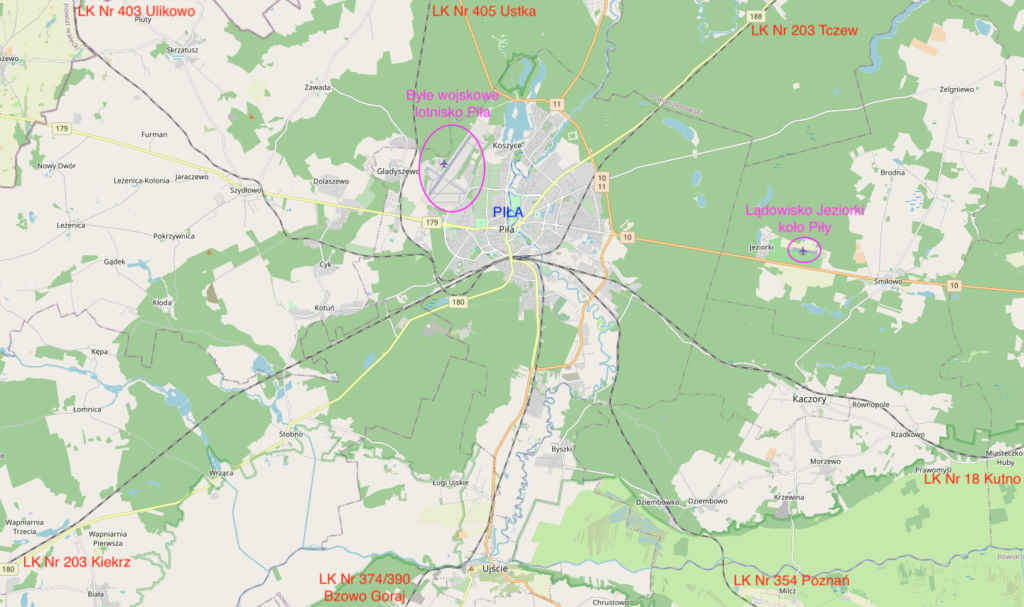
The real development of Piła came in the middle of the 19th century, when the development of the railway began. The construction of the railway from Berlin to Königsberg was initiated by the Prussian state, and personally by King Frederick William IV of Prussia, who presented plans for the railway in 1842. The investment was state-owned and not by private companies. In 1848, the Berlin-Szczecin railway route was opened and the construction of the Szczecin-Poznan route began. When designing railway routes, ease of track construction was taken into account rather than the shortest route. The existing steam locomotives at the time were weak and struggled to climb hills, so the rail route had to be flattened.
On 27 July 1851, a railway line was opened from Bydgoszcz via Piła to Krzyż Wielkopolski and on to Szczecin and Berlin. The railway route from Krzyż Wielkopolski to Piła was laid along the Noteć river, and further from Piła to Bydgoszcz also along the Noteć river. From Piła to Krzyż Wielkopolski is 65 km and the train covers this route in 50 minutes. From Piła to Bydgoszcz it is 90 km and the train covers the route in 1 hour and 15 minutes.
In the following years, connections from Piła to Poznan, Kołobrzeg and Wałcz were established. In this way, Piła became an important railway junction. A rolling stock repair facility was built here. Piła Główna is an island-type station, much like Krzyż Wielkopolski or Poznań Główny. After the Great World War, the Treaty of Versailles left Piła on the Germanic side. Rail traffic towards Poznań and Bydgoszcz was temporarily halted. Between 2014 and 2018, the station was refurbished. The station is located in the southern part of the centre of Piła, at 1 Zygmunta Starego St. The passenger station has six platforms. The station was electrified in the period 1989-1990, and all semaphores were replaced with luminous ones. Over the tracks in 1975, a 230 m long viaduct was built connecting the northern and southern parts of the city.
The railway junction in Piła is one of the most important in Poland. There are four railway stations in Piła; Piła Główna, Piła Kalina, Piła Leszków, Piła Podlasie. Currently, the following routes run through Piła: No. 18 Kutno – Piła Główna, No. 203 Tczew – Küstrin Kietz (non-electrified), No. 354 Poznań – Piła Główna, No. 374 Mirosław Ujski – Piła Główna, No. 405 Piła Główna – Ustka, No. 999 Piła Główna – Piła Północ. There is also a railway line No. 403 in Piła – 126 km long, connecting the branch station Piła Północ with the station Ulikowo.
History of Pila Airports.
The aviation history of the City of Piła is very rich. This is confirmed by numerous surviving aerial photographs taken even before the Great World War. Few people know that during the Great War, Piła was home to two aeroplane airfields, one airship base and a factory building aircraft. The training of new pilots was handled by two schools located at both airfields.
After the Great World War, Piła was not incorporated into the reborn Republic of Poland, but remained within the borders of Gremany. Although it was only 6 km to the Polish border. This was a deliberate move by the great of this world, especially Great Britain, so that the reborn Poland would not be too strong a state. Piła was not annexed to Poland until 1945.
First airport in Pila.
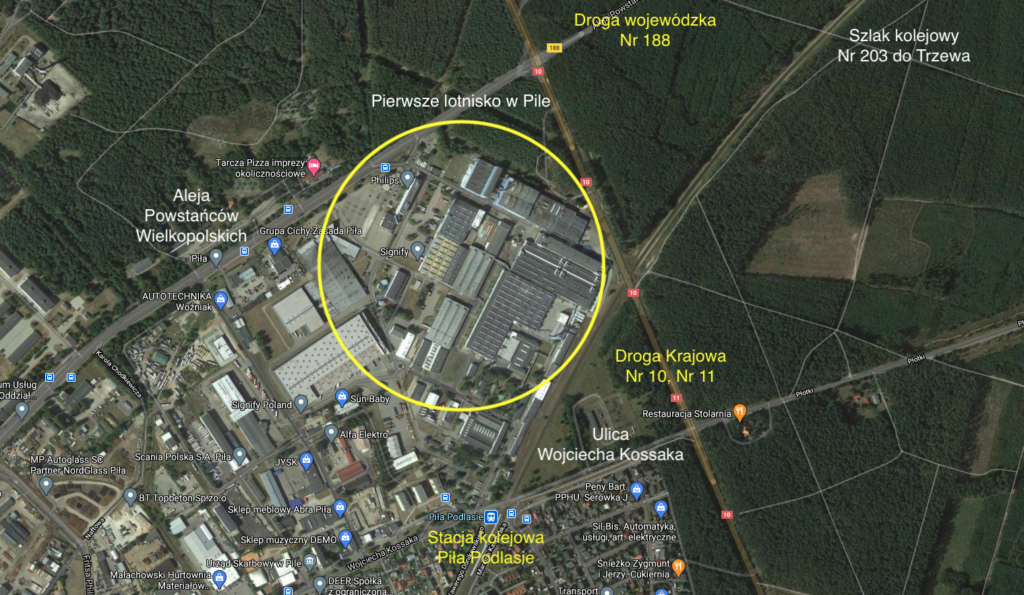
The first airfield in Piła was established in 1913. It was located northeast of the city centre, on the present Wojciecha Kossaka Street, on its western side. It was roughly between two railway crossings. A single wooden fire station (hangar) measuring 30 m x 21 m was built there. The airfield was officially opened for use on 20 October 1913. The airport was intended to provide civilian communication from Berlin (the hinterland of Prussia) to Danzig and on to the Inflants and the Muscovite brothers. The outbreak of the World War resulted in the airport being taken over by the military. New pilots were trained here and combat units were formed. The airport was expanded to meet the needs of the military. Several new hangars of various sizes were erected. Along the airfield, parallel to the street, terraced barracks were erected to serve various functions. At this time, a railway siding was brought to the airfield and airship base (1915).
Slightly to the west, on what is now Aleja Powstańców Wielkopolskich Street, barracks were built. Today (2011) it houses the Piła District Court.
With the outbreak of the Wielkopolska Uprising, an airborne unit was formed at Piła Airfield to act against the insurgents. The effects of these actions were negligible. The Treaty of Versailles severely restricted the Prussian air force and the airport came under civilian administration. In 1919, an attempt was made to establish a permanent air service between Berlin and Piła and Danzig and Königsberg. But there was little passenger interest. In the following years, other investors also tried to launch similar connections, but without success. The airport was losing its character. By the Second World War, all that remained was a small flying field for the local aeroclub. It had dimensions of 600 m x 400 m. It was located south-east of today’s Powstańców Wielkopolskich Avenue.
The airfield proved to be an excellent place for entrepreneurs. Post-military facilities were used as warehouses and warehouses. They were rebuilt or dismantled and new ones were built. Another sawmill in Piła and another carpentry shop were built here. Virtually the entire uplands field was built over. It was in this area, to the west of the railway tracks (route No. 203 to Tczew), that a light bulb factory was built, already in Poland, in 1958 – the Piła Light Bulb Factory Lumen, which in 1976, took the name Zakłady Sprzętu Oświetleniowego Polam-Piła, and since 1991, Philips Polska.
Airship base in Piła.
The airship base in Pila was established in 1914, just before the outbreak of the Great World War. Its expansion continued until 1917. It was located west of today’s Łukasiewicz roundabout, near Aleja Powstańców Wielkopolskich Street. The main building was an airship hall. It was of medium size and was designed for Perseval class airships. The airship hall had a base of 101 m x 25 m and a height of 23 m. The floor area was 2,525 square metres. According to other data, the hall was larger and measured 184 m x 35 m in base and 28 m high. There was an anchorage in front of the hall. In addition to this, the base had welfare facilities, a permanent hydrogen plant, a bomb depot and warehouses. In 1916, construction began on another airship hall that was much larger. It was to have dimensions at the base of 232 m x 40 m and a height of 35 m. The hall was to be rotatable, i.e. rotate along a vertical axis so that it could be positioned according to the direction of the wind. But it was not completed, because in 1917, the Germanic Germans abandoned the airships and gave all remaining airships to the navy. After the Great World War, the airship base facilities were dismantled.
Factory Ostdeutsche Albatros Werke GmbH.
The aircraft building factory, named Ostdeutsche Albatros Werke GmbH, was a subsidiary of the Albatros factory in Berlin. The origins of the factory date back to the end of the 19th century, when there were metal works west of the centre of Piła. This is the area of today’s Lotnicza, Medyczna and Grunwaldzka streets. At that time it was called Przedmieście Berlińskie. The owners of the factory, in the spring of 1914, entered into cooperation with the Albatros Works, establishing a subsidiary company. Initially, it was to produce spare parts for Albatros and other aircraft produced under licence. The outbreak of the Great World War verified these plans and the plant was to produce complete fuselages, wings and, eventually, entire aircraft.
The factory was greatly expanded, using funds obtained for future deliveries. Neighbouring plots of land were bought up, so that the plant covered an area of 22 hectares. Hangars, production halls, warehouses and offices were built, as well as steam machines (locomotives) and electric machines for power generation. A railway siding was also installed.
Adjacent to the factory was a pilot school, established in the autumn of 1914. The school was housed in one of the officers’ buildings.
The first aircraft built entirely in Pila was the school’s Albatros B.I. Later, fighter aircraft were also built: Albatros D.II, D.III, D.V and Fokker D.VII (under licence) intelligence aircraft: Albatros C.I, C.III, C.V, C.VII, C.X, C.XII, C.XV and others in short series. Generally, complete airframes were built and engines were supplied in full for final assembly. It is estimated that up to 5,000 fuselages and wings were built at Pila.
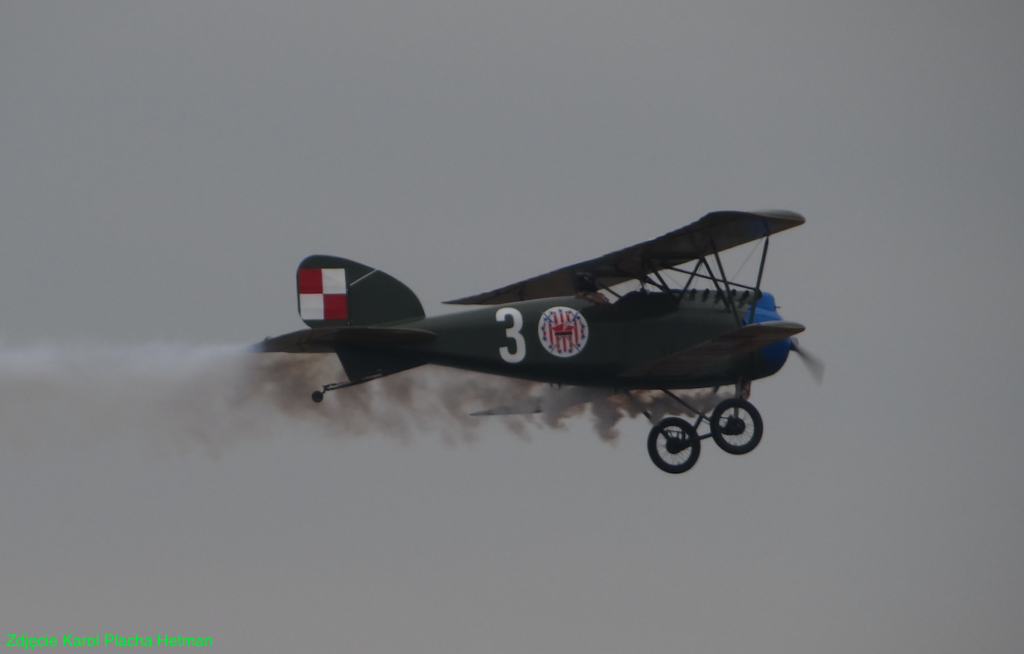
The aircraft produced at Ostdeutsche went into aerial combat on each of the European fronts of the Great War. At the time of the plant’s greatest activity, between 80 and 100 new machines per month left the production line, which, after test flying, went to the front. During the war, some 1,640 Germanic warplanes were flown at Pila Airfield. The production process made use of free labour (prisoners of war), such as the Muscovites, French, Italians or English, who were captured and housed in a local camp. At first it was a transit camp and then a forced labour camp. Many of the prisoners of war rested in the Leszków war cemetery and their graves can still be visited.
As a result of the Treaty of Versailles in 1921, the plant was closed down. Many of the aircraft (about 50) built in Piła were taken over by the Polish Army as war booty at various airfields and random airstrips. Mainly in Greater Poland, the Congress Kingdom and Galicia. They were on the equipment of the Polish Army until around 1922. A few specimens a little longer.
The main building of the Ostdeutsche Albatros Werke GmbH factory was a compound of several halls. It had a floor area of more than 10,000 square metres. It was destroyed during the hostilities in February 1945. After the war its remains were demolished.
Written by Karol Placha Hetman

